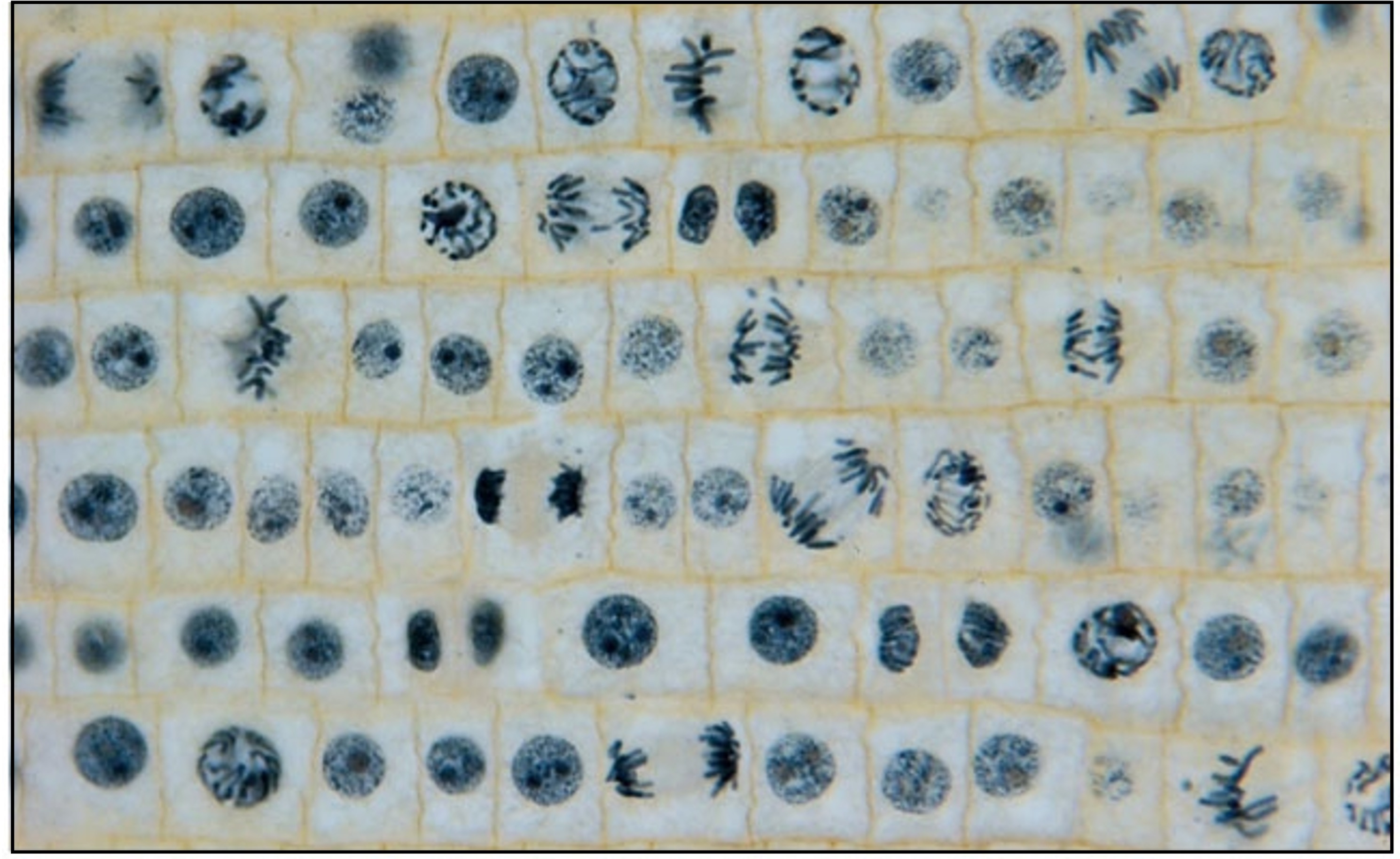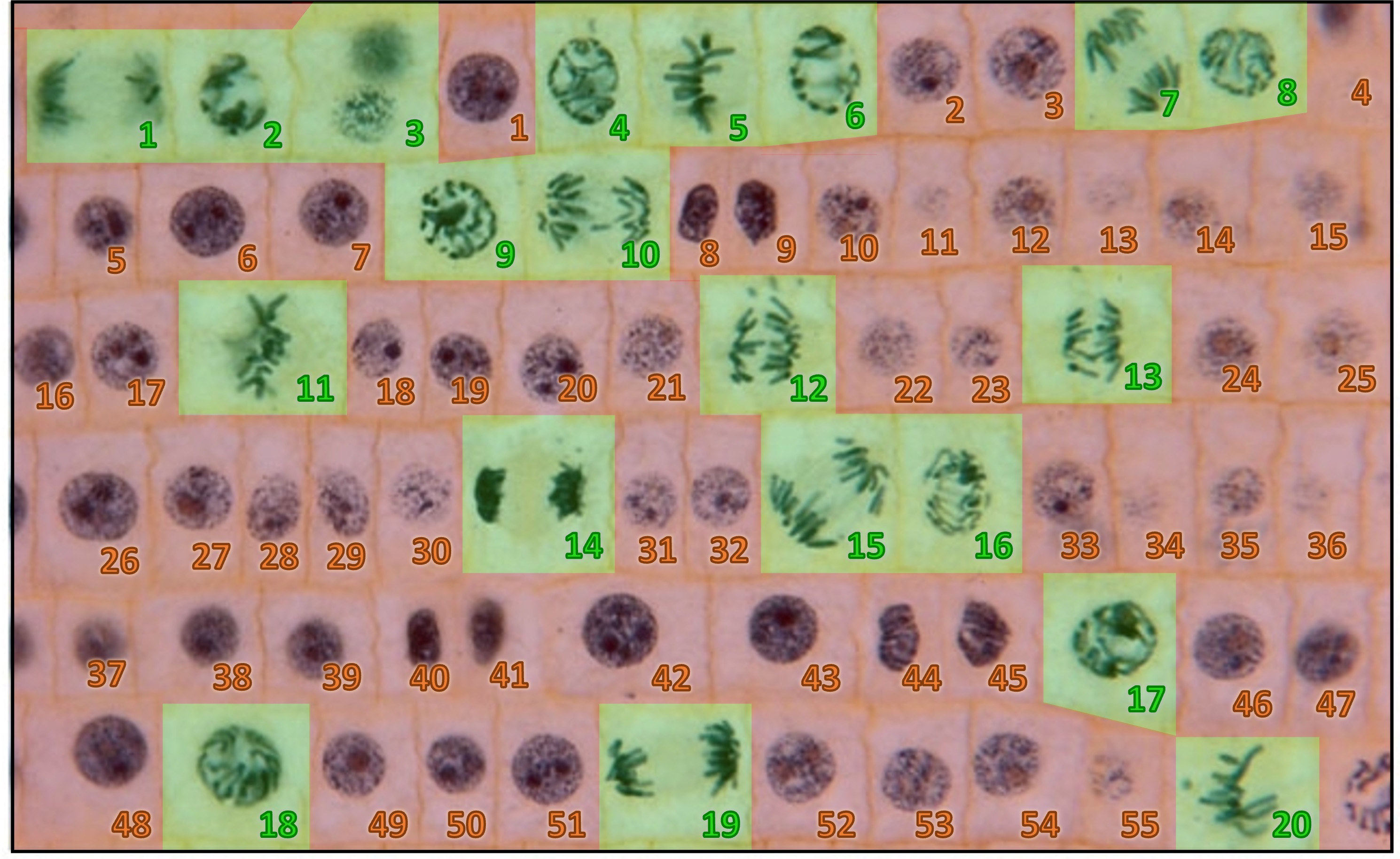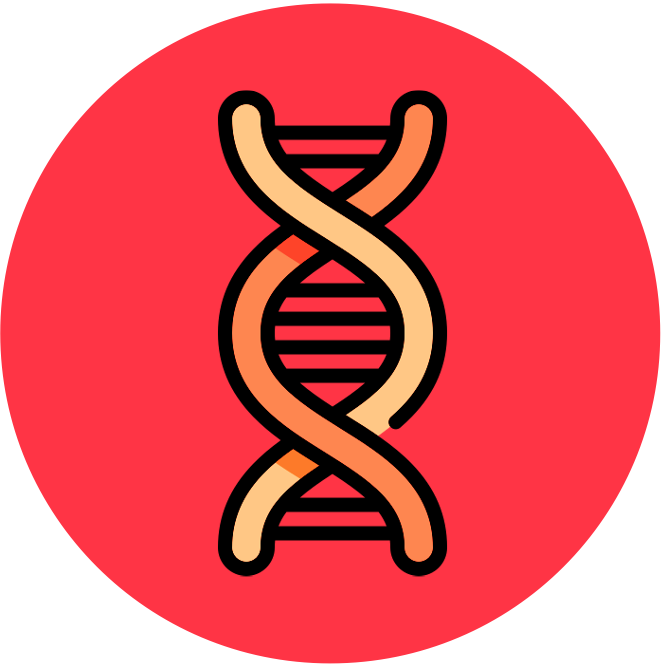

Mitosis
Mitosis is a process of nuclear division that involves four distinct stages and forms two genetically identical nuclei
-
It is preceded by interphase, during which the chromosomal DNA is replicated to form sister chromatids
-
The physical splitting of the cell into two (cytokinesis) occurs concurrently with the final stages of mitosis
Stages of Mitosis
Mitosis involves a sequence of events that can be organised into four stages: prophase, metaphase, anaphase and telophase
-
Mitotic division is a fluid process whereby one stage evolves into the next, meaning the identification of stages can be somewhat subjective
-
Nonetheless, each mitotic stage is characterised by certain key events that must occur within a consistent order
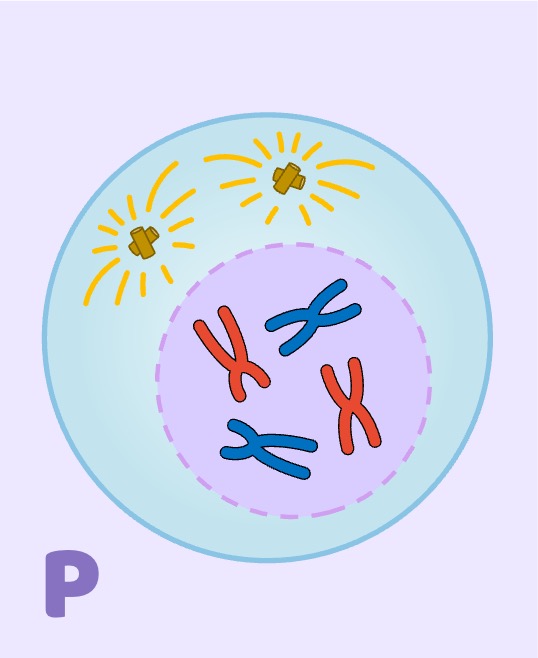
Prophase
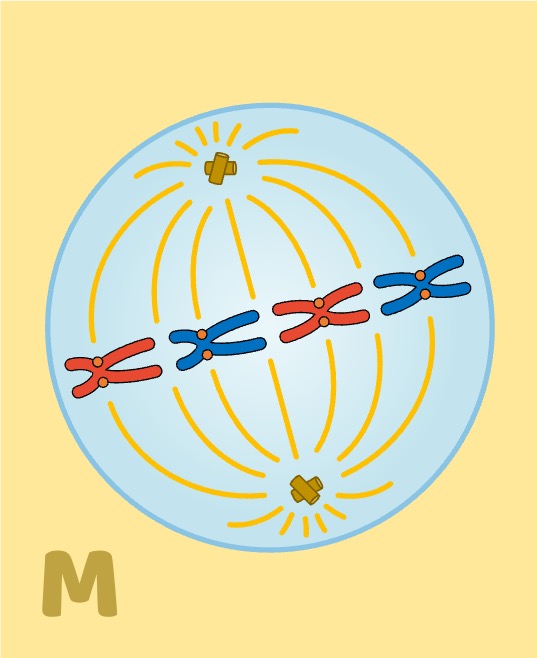
Metaphase
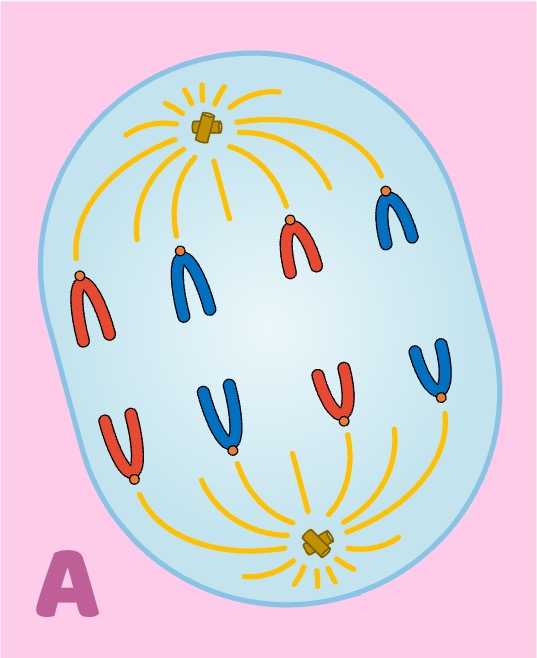
Anaphase
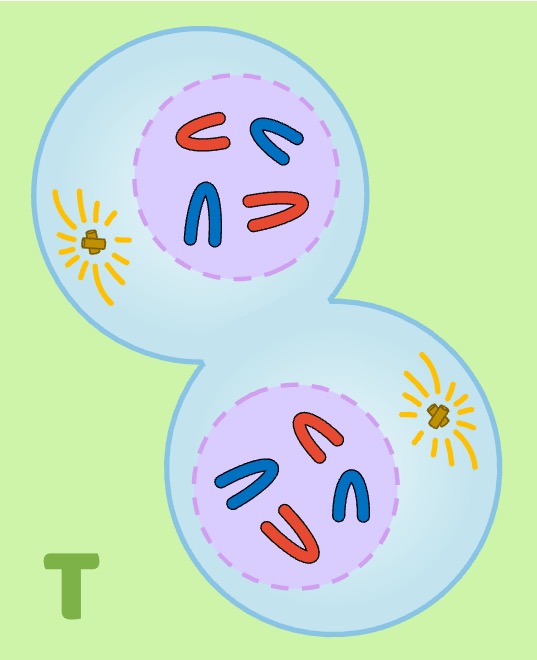
Telophase
Prophase
-
DNA supercoils and chromosomes condense (becoming visible under microscopy)
-
The chromosomes are composed of genetically identical sister chromatids held together via cohesions
-
Paired centrosomes move to opposite poles of the cell and produce microtubule spindle fibres
-
The nuclear membrane breaks down and the nucleus dissolves
Metaphase
-
Protein complexes called kinetochores attach to the centromere (one complex per sister chromatid)
-
The kinetochores mediate a connection between the centromere and the microtubule spindle fibres
-
The lengthening or shortening of spindle fibres cause the chromosomes to move and align at the centre of the cell
-
The movement of the chromosomes is controlled by microtubule motor proteins – kinesin and dynein
Anaphase
-
The cohesins that were holding the sister chromatids together are removed at the beginning of anaphase
-
Continued contraction of the spindle fibres cause the sister chromatids to separate
-
Once the chromatids are pulled apart, they are considered to be separate chromosomes
-
The genetically identical chromosomes are pulled by the spindle fibres towards the opposite poles of the cell
Telophase
-
Once the two chromosome sets arrive at the opposite poles, the spindle fibres dissolve
-
The chromosomes decondense (into chromatin) and are no longer visible under a microscope
-
A nuclear membrane will reform around each of the two sets of chromosomes, completing nuclear division
Cytokinesis will occur concurrently with the later stages of mitosis, splitting the original cell into two (each with one nucleus)
Overview of Mitosis
Summary of Phases
Division in Kidney Cells
Cells undergoing mitosis will lack a clearly defined nucleus and possess visibly condensed chromosomes
-
In prophase, the chromosomes will be condensed but still appear confined to a nuclear region (centrally clustered)
-
In metaphase, the chromosomes will be aligned along the equator of the cell (forming a central line)
-
In anaphase, the chromatids have separated and will appear as two distinct clusters at the poles of the cell
-
In telophase, two distinct nuclei will be present in a single cell (can be difficult to identify as cytokinesis occurs concurrently)
Phases of Mitosis
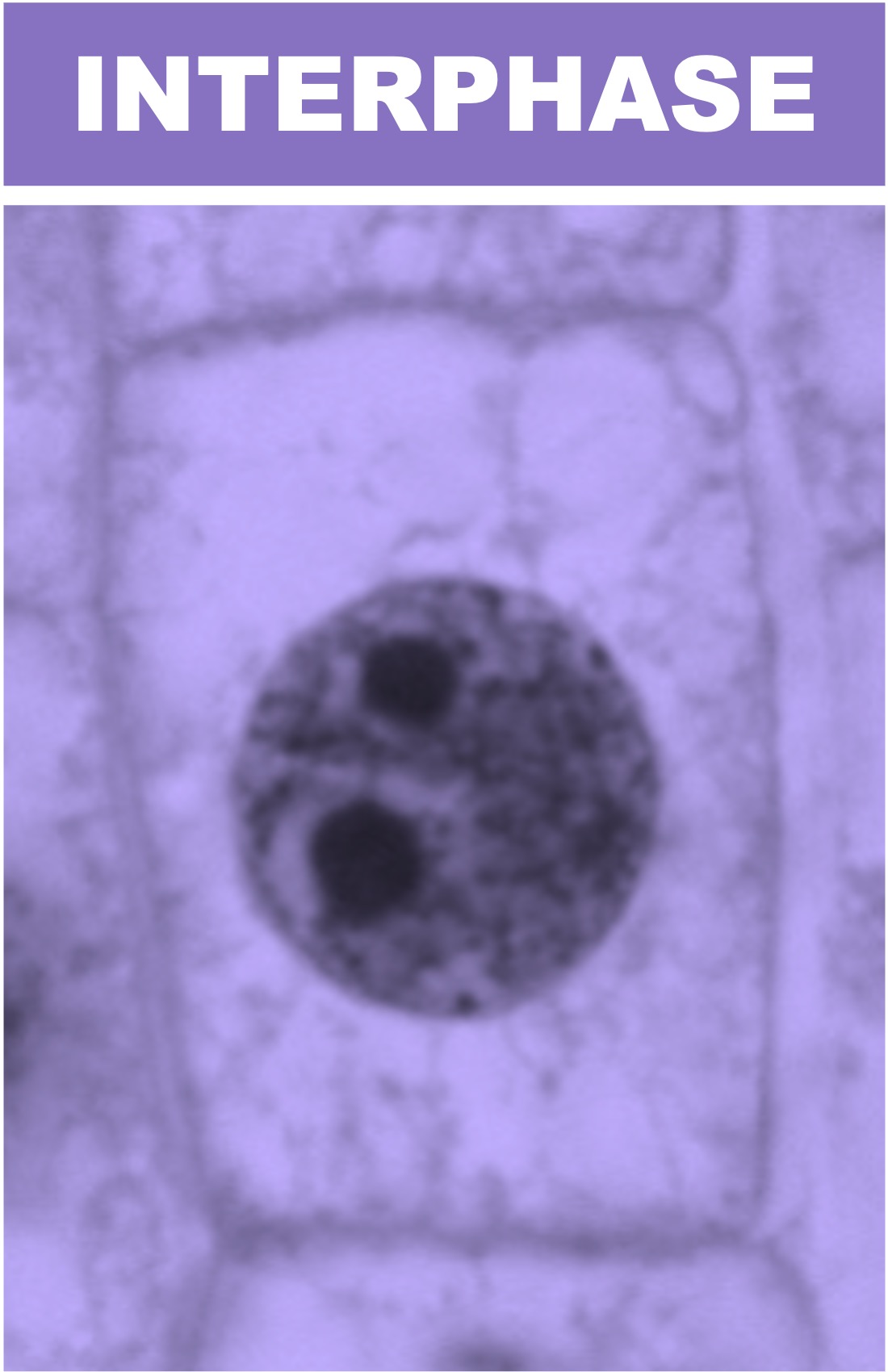
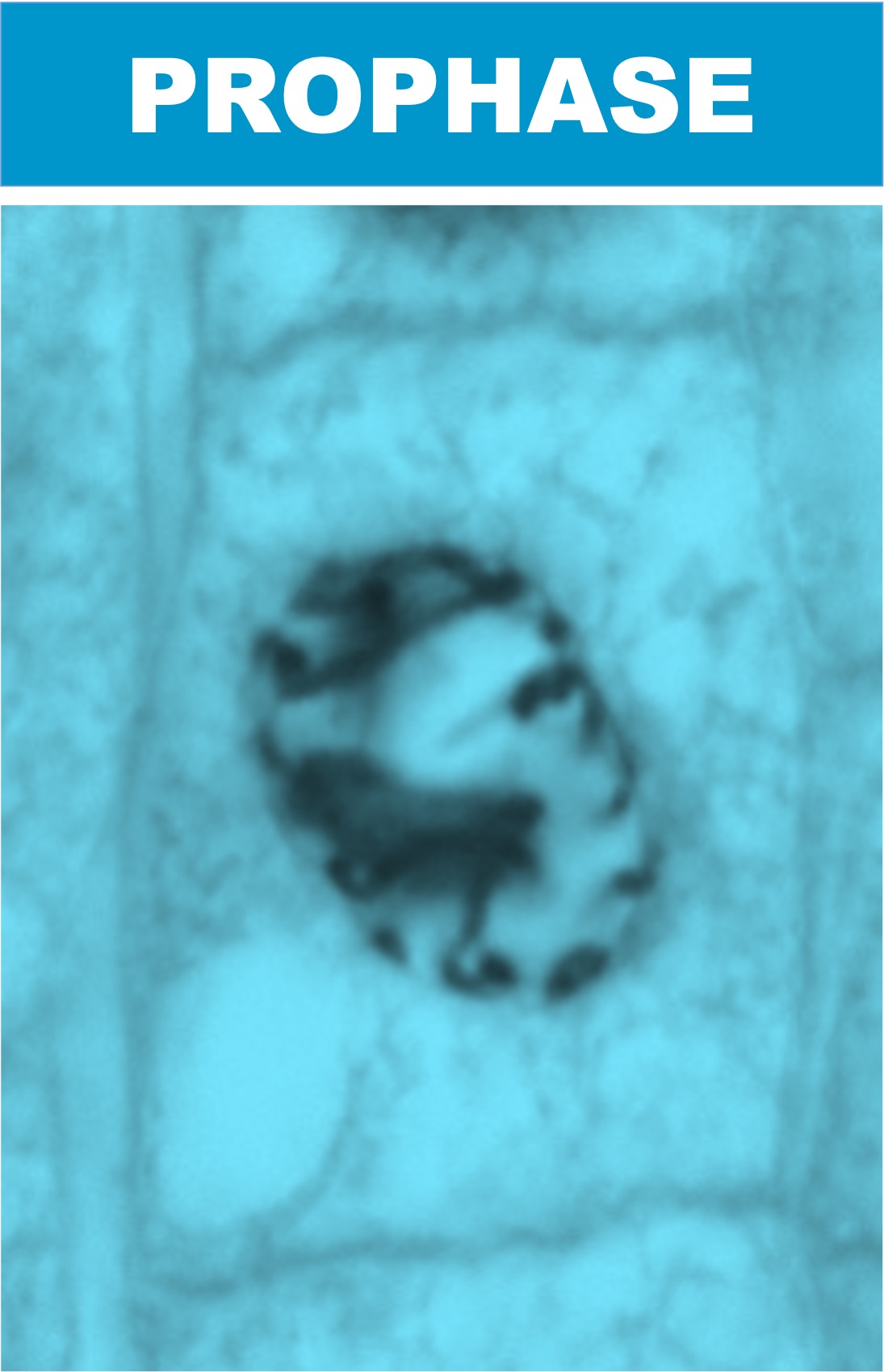
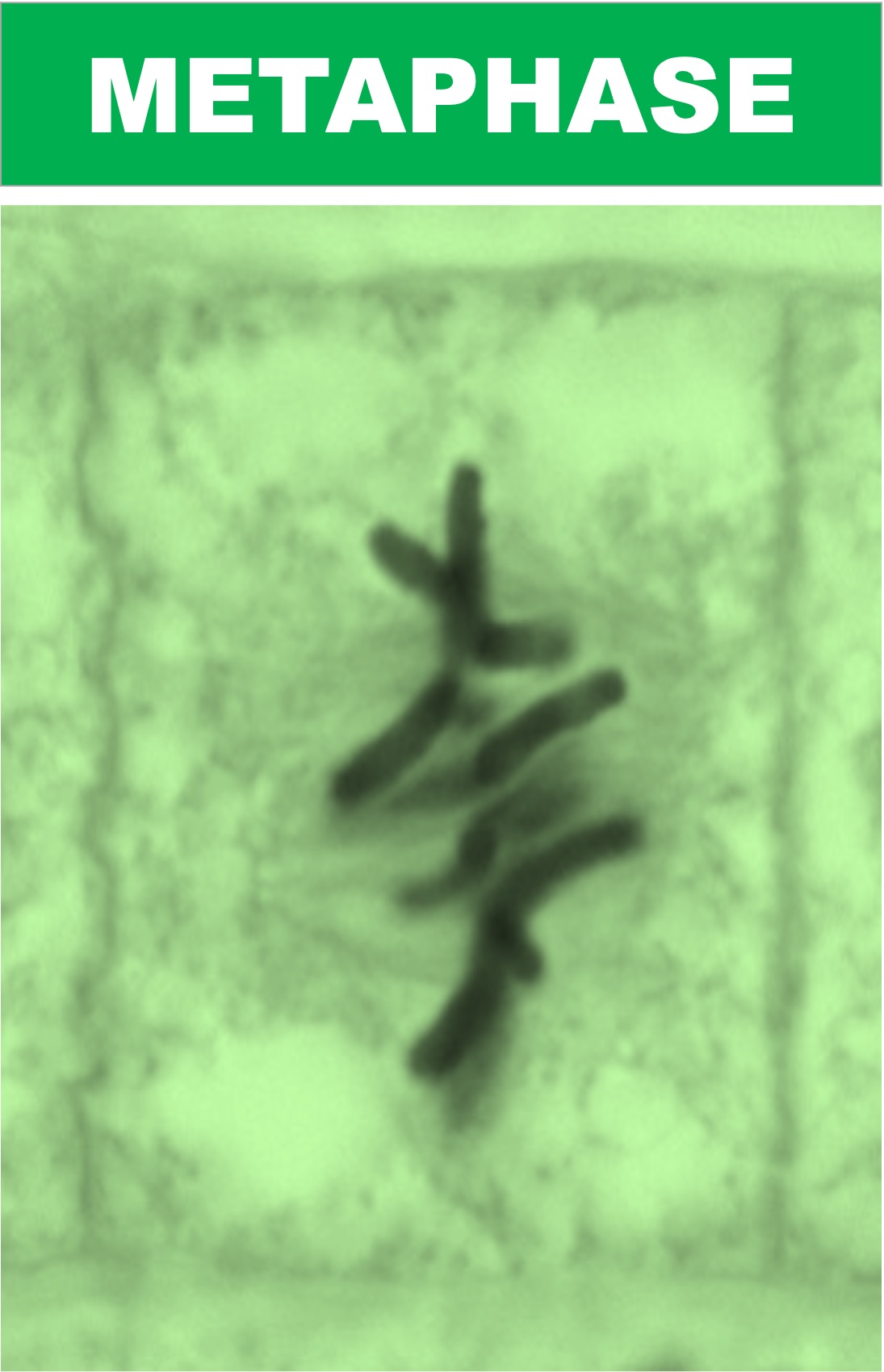
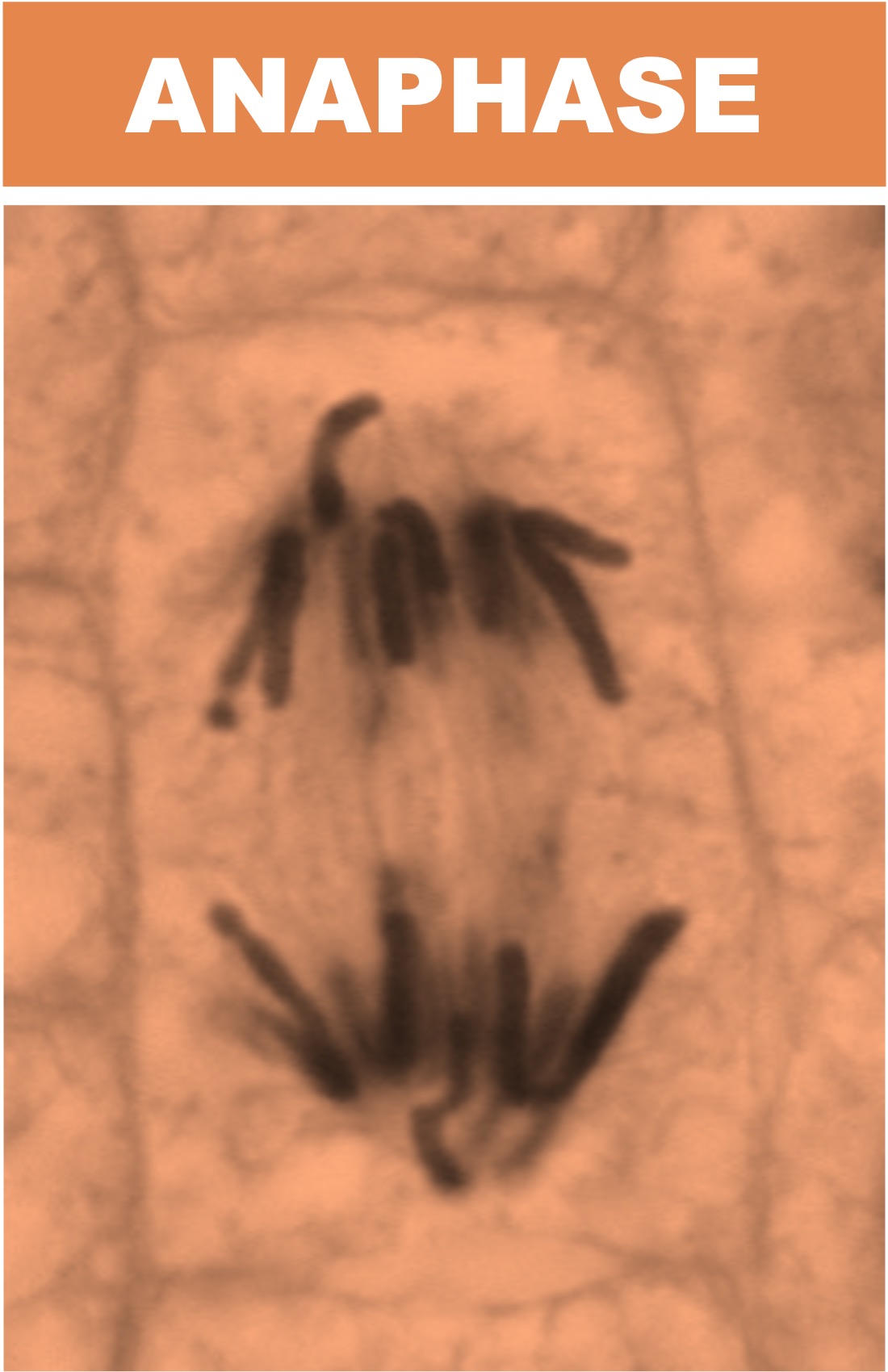
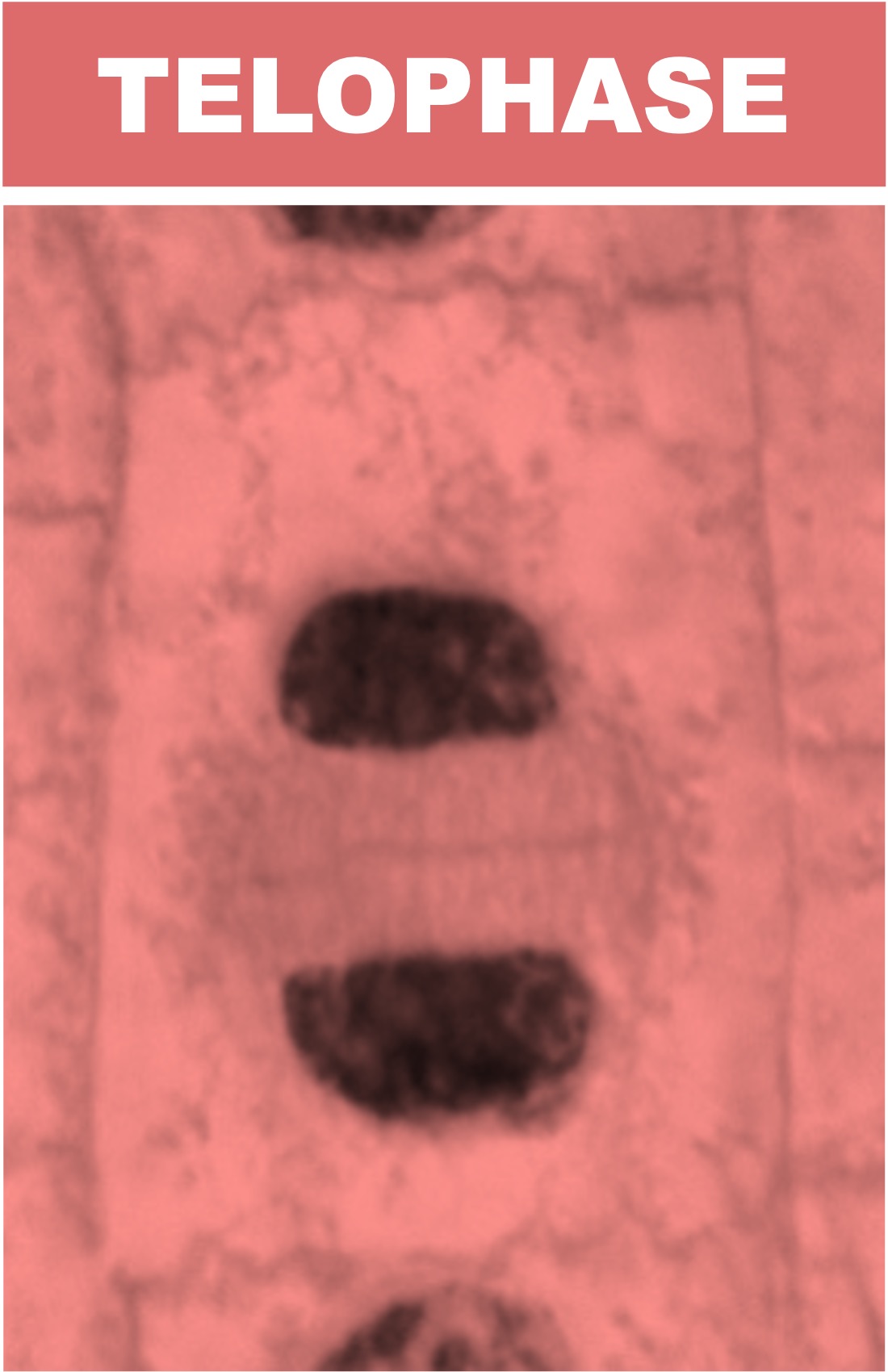




Mitotic Index
The mitotic index of a cell population is the ratio between the number of cells in mitosis and the total number of cells
-
It can be used as a clinical tool to determine the proliferation status of a tissue (e.g. cancer identification)
-
In simple terms:
-
Mitotic Index = Cells in mitosis ÷ Total number of cells
-

